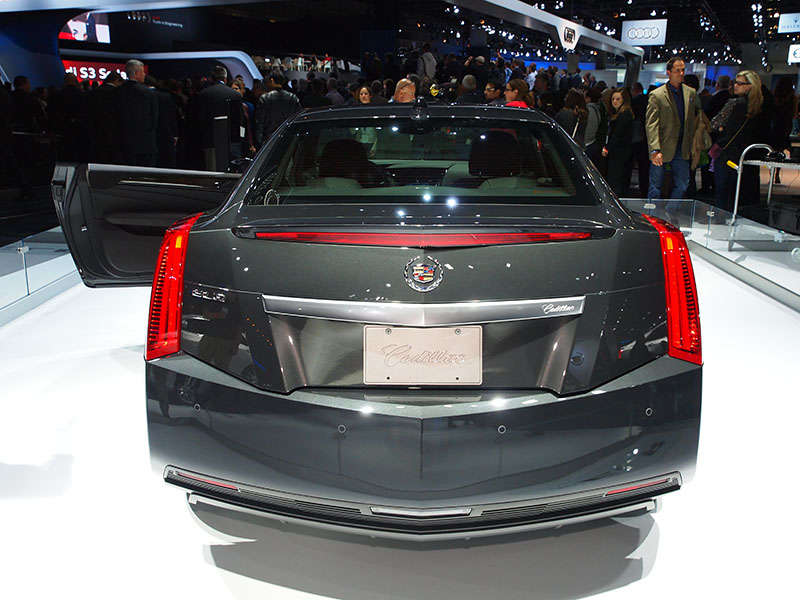Recent Articles
Popular Makes
Body Types
2014 Cadillac ELR Quick Spin Review
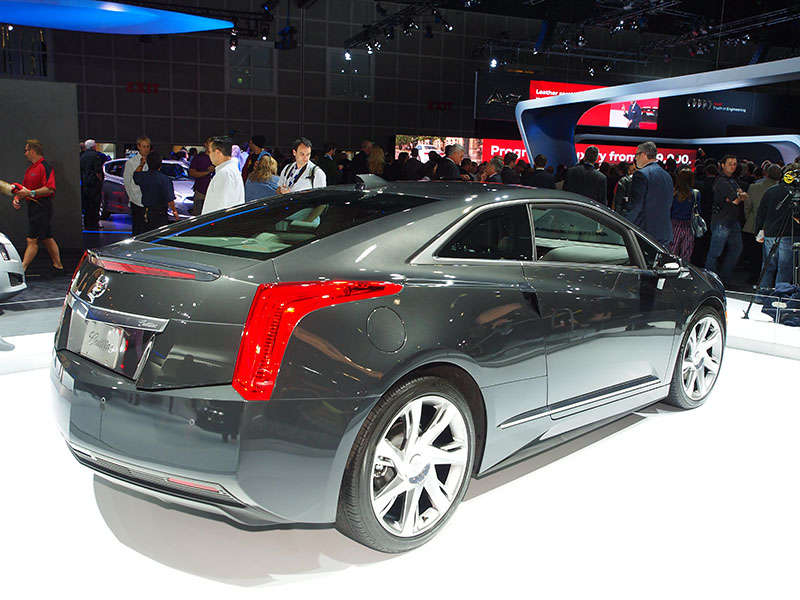
At $75,000, the 2014 Cadillac ELR is the most expensive vehicle wearing a wreath-and-crest badge that you can buy. Not only that, this rakish 4-seat coupe is ultra-exclusive, a limited-production electric car with a range-extending gasoline engine that serves as a generator on longer drives. If that sounds familiar, you’re not mistaken. The 2014 Cadillac ELR is equipped with the same powertrain as the Chevy Volt.
Cadillac invited me to take a short drive in the new ELR at the 2013 Los Angeles Auto Show, and I spent about 45 minutes discussing the electrified Cadillac with Darin Gesse, the marketing product manager for both the Volt and the ELR. One of my first questions to Gesse asked about the target consumer for the ELR. He replied that this electric Cadillac coupe is unlikely to appeal to early adopters of EV or alternative powertrain technology. Rather, the ELR is for people who are seeking a proven platform wrapped in a stylish, expressive, and luxurious package.
Gesse would not comment on expected sales volume, except to state that the ELR will be a relative rarity on the road. From my perspective, that suits Cadillac’s interim flagship just fine, and will likely make the car all the more appealing to its owners.
2014 Cadillac ELR Quick Spin Review: About Our Test Car
The car in the photos is the Cadillac ELR that was parked in the L.A. Convention Center’s exhibition hall. I drove an ELR painted extra-cost Crystal Red Tintcoat with Cashmere leather and the standard 20-inch aluminum wheels. It had no options, and cost $75,995.
That price tag can rise if buyers choose to add carbon fiber interior trim, upgraded wheels with Midnight Silver painted pockets, full-speed-range Adaptive Cruise Control, and a 240-volt home charging system. In what strikes me as a very strange product strategy, especially given how hard it is to see out of this car, Cadillac includes Forward Collision Alert and Lane Departure Alert systems as standard equipment, but asks buyers to pay extra for the far more useful Side Blind Zone Alert and Rear Cross Traffic Alert systems. Really, it should be the other way around.
Actually, at $75,000, all of this stuff ought to be standard.
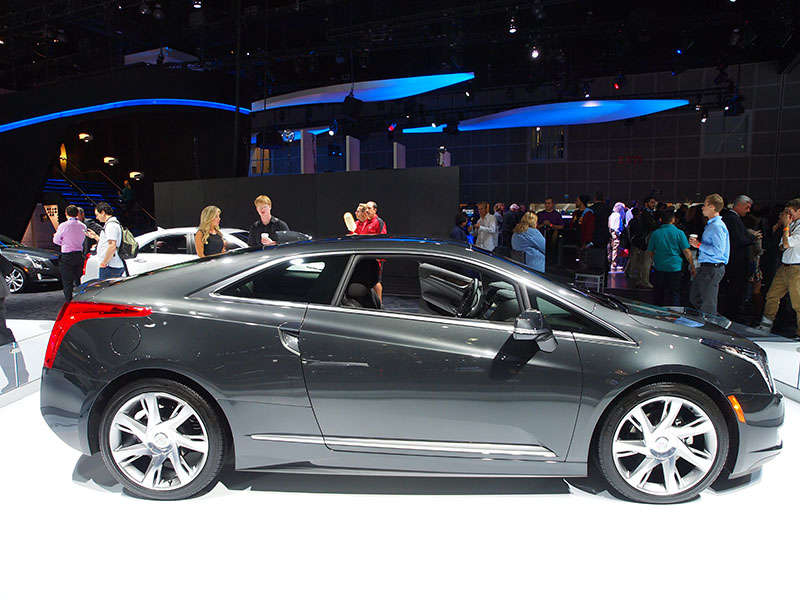
2014 Cadillac ELR Quick Spin Review: Styling and Design
Compared to the Chevy Volt upon which it is based, the Cadillac ELR has a longer wheelbase, a wider track, and bigger wheels and tires. Perhaps as a result, when you up close and personal with the car, the ELR looks bigger than it does in pictures.
I think the company has done an enviable job of wrapping the ELR’s mechanical components in Cadillac’s current Art & Science design themes, and though I couldn’t quite shake the impression that it resembles a shrink-wrapped Cadillac XTS, there’s no denying that the new ELR is far more stylish and attractive than electric vehicles that don’t have a Tesla badge on them.
Given the ELR’s relationship to the Volt and its swept-back roofline, you might deduce that the car is equipped with a cleverly concealed hatchback. That’s not the case. Instead, it has a 10.5 cu.-ft. trunk. And get this. Cadillac shaped it to make sure that it could contain a single full-size Callaway golf bag loaded up with clubs and gear.
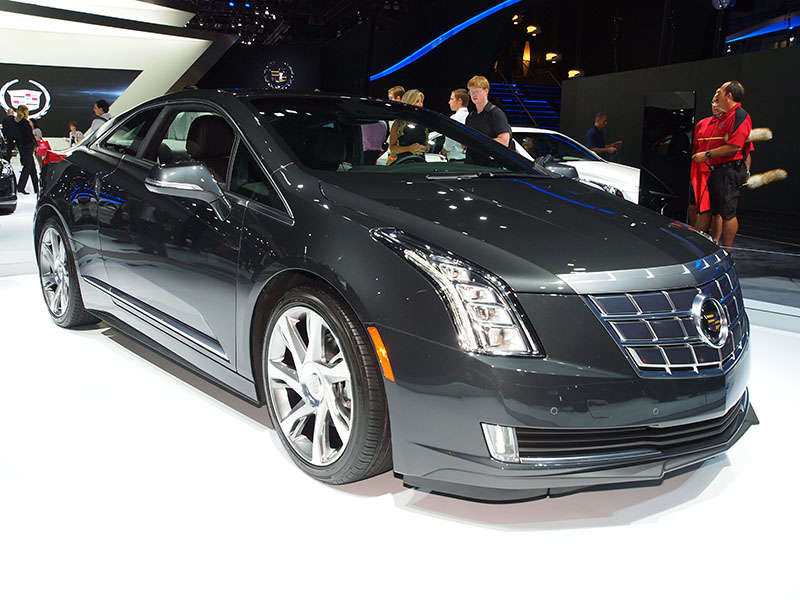
2014 Cadillac ELR Quick Spin Review: Comfort and Quality
Open the Cadillac ELR’s somewhat lengthy door, and you’ll find a thoroughly modern and luxurious cabin rendered in quality materials including cut-and-sewn leather, suede microfiber, wood, gloss black trim, and chrome accents. Cadillac offers carbon fiber accents as an option. If you’ve been in a modern Cadillac, you’ll recognize the look and layout, complete with configurable gauges and the oft-maligned Cadillac User Experience (CUE) center control panel.
Though a Cadillac ELR is designed to seat four people, it is best used to transport two adults and two children. Seat comfort up front is excellent, but as a bigger member of the species, I found that the car fit me snugly.
If you’re wondering, yes, I did get into the ELR’s back seat, which folds down to expand cargo capacity, and found it quite inhospitable. The bottom seat cushion sits high and delivers excellent thigh support, but headroom is basically non-existent, and legroom is super tight. Getting into and out of the back seat is also a chore, due both to required body contortions and a front seatbelt that stretches across the path.
I asked Gesse why Cadillac bothered with a rear seat. After explaining that designers wanted to retain the ELR’s fastback roofline and rear windows, and citing how vehicles like the Porsche 911 have back seats that nobody actually intends to use, he said: “Hey, you need a place to put your briefcase, right?”
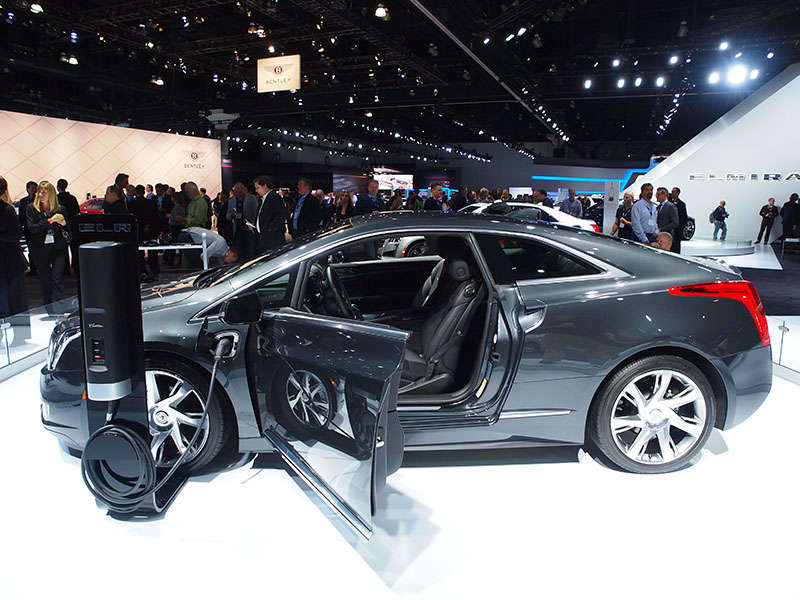
2014 Cadillac ELR Quick Spin Review: Features and Controls
As is true of the ATS and the new CTS Sedan, the 2014 Cadillac ELR’s cabin is dominated by its CUE system and a beautiful steering wheel fronting a set of reconfigurable gauges. Drivers can choose to see a little or a lot of vehicle information, depending on their mood and requirements. There isn’t much choice when it comes to CUE, though I will say that Gesse used the system like a total pro. Like any other new technology, the more you use it, the better it works.
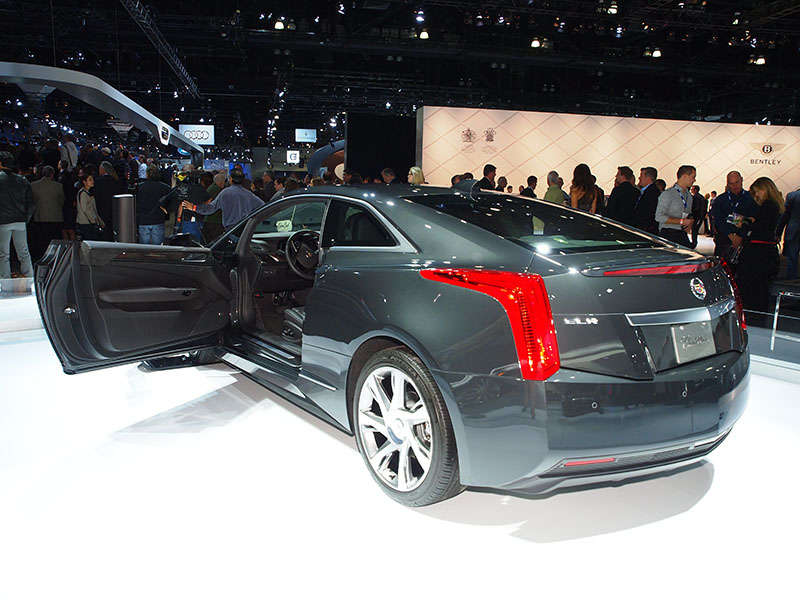
2014 Cadillac ELR Quick Spin Review: Under the Hood
Cadillac’s claims that the ELR is “the industry’s only electric vehicle offered by a full-line luxury automaker” and that “it represents the first application of Extended Range Electric Vehicle (EREV) technology by a full-line automotive luxury brand” are specious at best. A Tesla Model S is certainly luxurious, and a BMW i3 offers an optional range-extending gasoline generator. Nevertheless, when read carefully, the statements are technically accurate.
If I sound like a skeptic, let me clarify that I’m a huge fan of General Motors’ EREV powertrain. It eliminates range anxiety, the worry that an electric car’s battery will run out of juice before visiting its next power outlet, while delivering enough electric range to handle average American commuting distances. With a Cadillac ELR, you can travel 37 miles using nothing but electricity, or you can get behind the wheel in Manhattan and drive to Los Angeles without ever plugging the car in. And when you get to L.A., the ELR qualifies for the commuter lane, letting you bypass all that traffic. How awesome is that?
Here’s how it works. A large, T-shaped 16.5-kilowatt Lithium-ion battery sits in the middle of the car, under the center console and branching out behind the rear seats. It powers electric motors that drive the car’s front wheels.
To charge the battery, the driver plugs the ELR in using the standard 120-volt travel charger in the trunk or the optional 240-volt home charging unit that is normally installed at the owner’s home. Using the latter, it takes five hours to replenish the battery. Using the former, expect re-charging to take 15 hours or more.
So, what happens if the owner needs to drive the ELR farther than 37 miles? Once the battery reaches its minimum state of charge, the 1.4-liter gasoline generator fires up. The power that it makes is converted to electricity, and that electricity is supplied to the electric motors that drive the ELR’s front wheels. The result is a car with more than 345 miles of total range before it needs to visit a gas station or a power outlet, and this duality is what allows the ELR to be driven across town or across the country without worry.
Total system output measures 207 horsepower. That’s not much in a car weighing 4,050 pounds, yet Cadillac says the ELR accelerates to 60 mph in 7.8 seconds. How can this be? Torque, lots of it, from the moment the driver steps on the accelerator pedal. Electric cars make maximum torque right away, and the ELR’s EREV powertrain delivers 295 lb.-ft. of it, making this one quick Caddy off the line.
Depending on driver preferences or requirements, four different driving modes are available. Tour mode is the default, and calibrates the drivetrain to operate in EV mode until the battery is depleted. It also tries to maximize range as much as possible. Sport mode makes the ELR more responsive to driver inputs and less concerned about maximizing range. The car’s suspension and steering settings are also firmer in Sport mode. Mountain mode ensures that the ELR can tackle elevation gain with no trouble.
The fourth mode is a Hold mode. This allows the driver to conserve battery for use in specific driving environments, such as in restricted driving zone in the urban centers of many European cities.
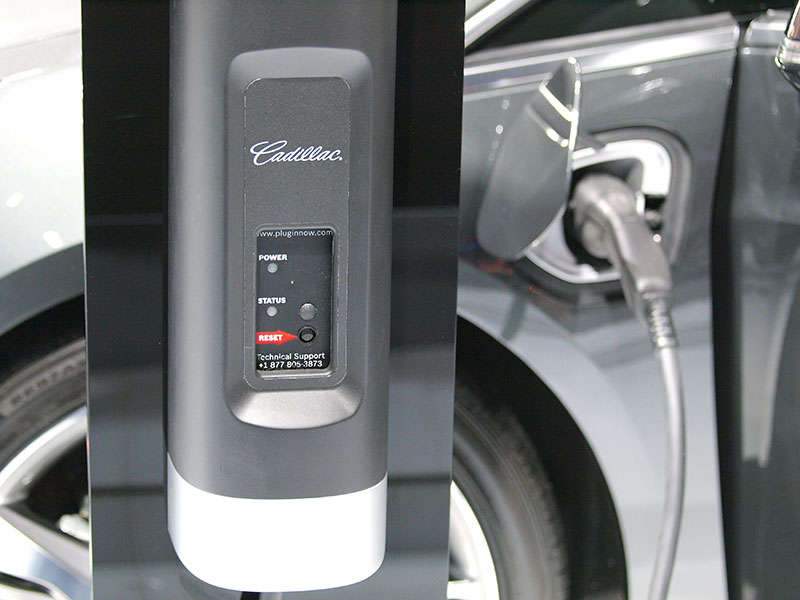
2014 Cadillac ELR Quick Spin Review: Driving Impressions
At the beginning of this article, I explained that I spent a very short time with the Cadillac ELR. My driving time lasted about 15 minutes, long enough to circumnavigate a loop around the Los Angeles Convention Center. The driving was conducted strictly on city streets, and I don’t believe I exceeded 60 mph at any time. In other words, the observations that follow are valid only for such an environment.
As I expected, the ELR proves strong and quick when accelerating away from an intersection no matter the drive mode, delivering a seamless and quiet rush of power. The car is quiet, too, and when the gasoline generator is running, Cadillac employs Active Noise Cancellation technology to hush any unwanted grumbling that might enter the cabin.
On the indifferently maintained streets of Los Angeles, the ELR’s Tour mode provided a compliant ride while, just as advertised, the Sport mode stiffened the steering and suspension in a satisfying if not genuinely sporty fashion.
My least favorite aspect of driving the ELR pertained to the brakes. I’ve got size 12 feet, and found that when I lifted off of the accelerator pedal to step on the brake pedal, the natural arc taken by my foot planted the top part of my shoe sole onto the metal brake lever rather than the pedal itself. This, coupled with the delayed response from the regenerative braking system (a common characteristic), made for some hard, somewhat panicked stops and more flashing lights from the Forward Collision Alert system than perhaps my host from Cadillac may have preferred.
That might be one reason Cadillac elects to make that technology standard. Another reason might be that outward visibility is merely adequate. The car’s windshield pillars are thick, the front corners of the car are invisible, and if you choose to sit low in the saddle, it’s probably even harder to see where you’re going. While waiting for pedestrians to clear an L.A. crosswalk, a cyclist traveling the wrong way down the street was obscured from my vision, but Cadillac’s Gesse saw the guy and alerted me to his presence.
Another item of note: people notice this car. It might look like a shrink-wrapped XTS, but I found that lots of pedestrians did double takes followed by hard stares when I was driving the ELR in downtown L.A. And that behavior validates the ELR’s reason for existing in the first place.
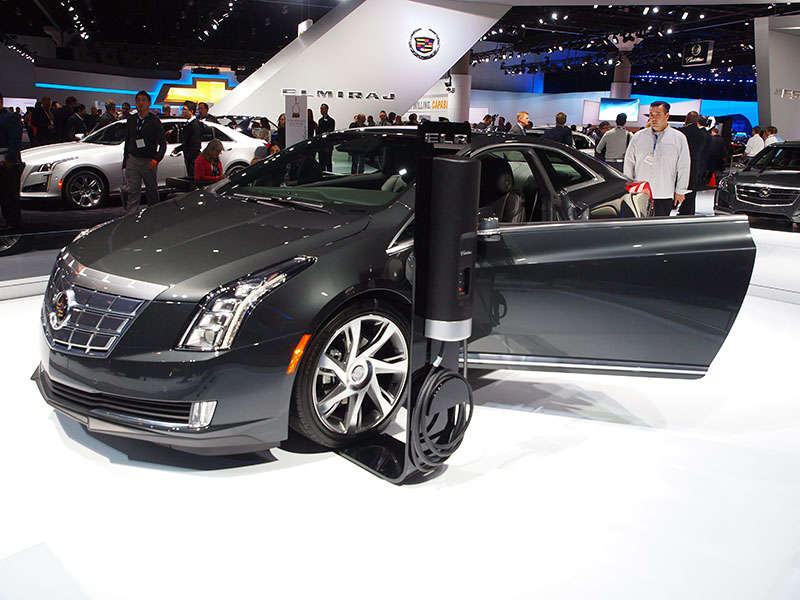
2014 Cadillac ELR Quick Spin Review: Final Thoughts
If you’ve heard that the new 2014 Cadillac ELR is nothing more than a fancy Chevrolet Volt, that’s inaccurate. The ELR might share its EREV drivetrain and basic platform with the half-price Chevy, but it drives differently, is far more luxurious and modern inside, and can be legitimately called attractive.
Beyond the window dressing, though, the Cadillac ELR delivers worry-free electric vehicle ownership. Driving range is never a problem, and the ELR lets owners cover the majority of their miles without burning a drop of gas. Yeah, I agree that the price tag is too high. But in exchange you’ll definitely own a luxury car that few other people have, even in L.A.
Cadillac provided the 2014 ELR for this review
